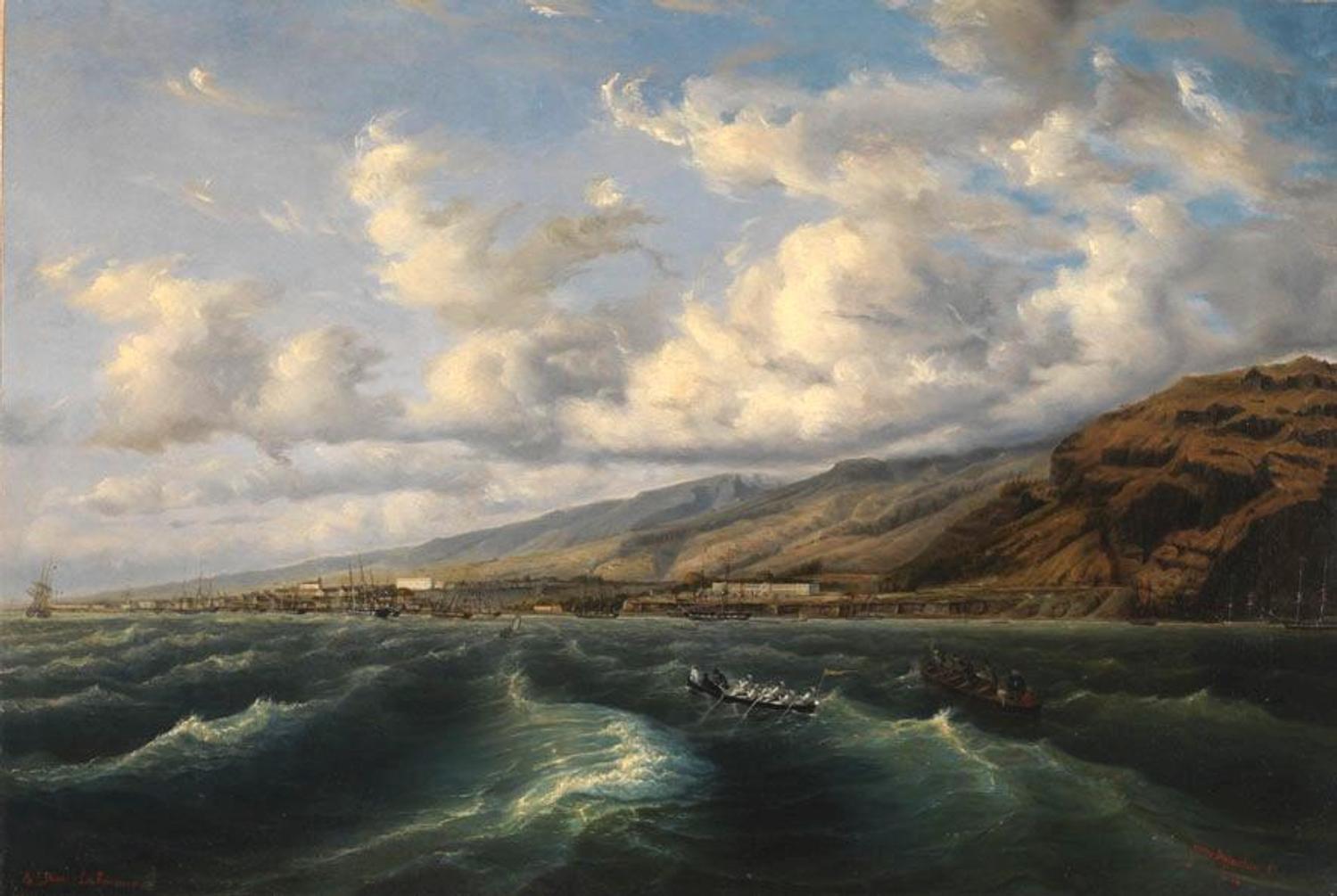THE MASTERPIECES OF THE LEON-DIERX ART GALLERY : Numa DESJARDINS
Numa DESJARDINS
Flacq (Mauritius Island), 24 March 1826 – Mauritius Island (….?)
We actually have very little precise information concerning the biography and career of Numa Desjardins. He was a painter, but also a musician, and appears to have been one of Mauritius island’s most important artists during the second half of the 19thcentury.
In 1882, Henri Magny, a journalist visiting the British colony declared that «with the exception of a large number of amateurs who paint during their leisure time, painting here is practised by experienced artists whose task consists in disseminating healthy popularisation of the art. The names of Mr de La Hogue, an accomplished portrait artist, Mr Avice, a skilled landscape painter, as well as Raphaël de Bavet and N. Desjardins, who have no specific specialisation, are on everyone’s lips when we speak of the divine Apelles (ancient Greek painter)». (Quoted in Panorama de la peinture mauricienne by Andre Decotter, Editions de l’ocean Indien, 1986).
In addition, in the 1870s-1880s, Desjardins attempted to set up an art gallery in Mauritius, a project that was never achieved. Finally, it seems that he was awarded several distinctions at the Universal Exhibition in Paris in 1867.
Only four landscapes, painted by the artist between 1854 and 1885, are known to us. The earliest, Vue de Saint-Denis (View of Saint-Denis) (1854) is conserved in the Leon-Dierx art gallery.
Vue de Saint-Denis (View of Saint-Denis), Numa DESJARDINS
1854
Oil on canvas
72 x 106 cm
Inv 1939.00.281
Views of Saint-Denis, often lithographs and seen from the ocean, were fairly common during the first half of the 19thcentury. The main harbour of the colony, Saint-Denis was where passengers disembarked from ships sailing from Europe and Asia. This painting by Numa Desjardins is structured in three clearly defined sections.
A large dark bluish-green rectangle, the Indian Ocean, is livened up by waves emphasised using light touches of white. These form a network of lines converging towards the land, at a point situated approximately in the centre of the composition. The island is placed in an elongated triangle, with its shortest side culminating at the headland of Cap Bernard.
The town is hardly visible, and only the main monuments can be identified: the barracks of the naval infantry, the military hospital and the cathedral of Saint-Denis. The brown and green tones become paler from the right to the left of the painting, emphasising the perspective. A wide blue sky dotted with the clouds is painted in the rectangle that covers half of the painting.
The meticulous smooth touches bear witness to Numa Desjardins being influenced by the academic landscape painting of his period. The painting is also an interesting example of the movement of artists between the Islands of the south-western Indian Ocean during the 19th century.






